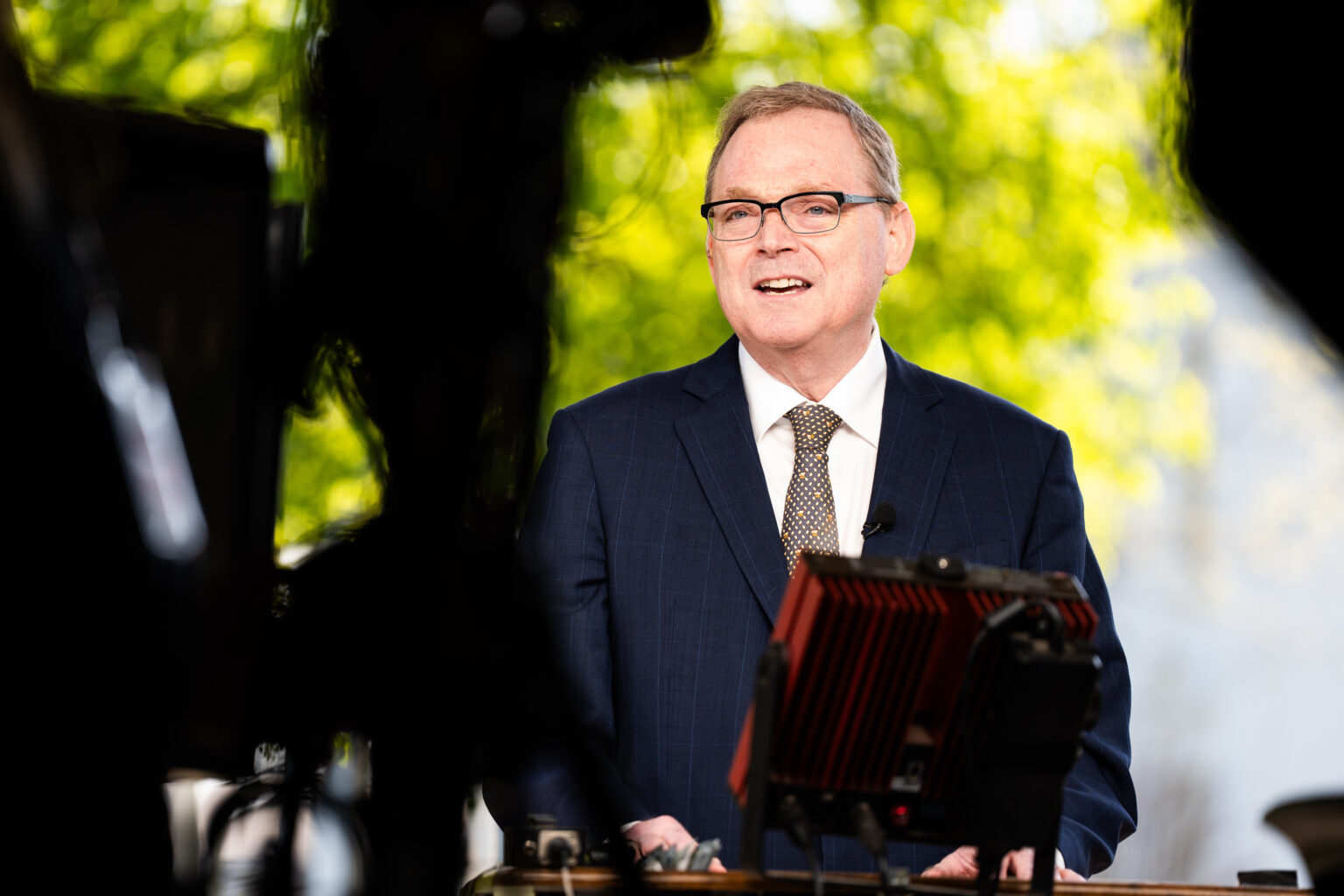Shifting Perspectives in U.S. Economic Policy and Leadership
Controversial Remarks and Their Implications
In late March, a lighthearted yet provocative comment from White House economic advisor Kevin Hassett drew considerable attention among the economic community. During an event hosted by the Brookings Institution, Hassett humorously criticized wind turbines, attributing bird fatalities to their operation-a remark reminiscent of President Donald Trump’s often blunt rhetoric. This spontaneous comment not only elicited laughter but also highlighted underlying tensions regarding the administration’s stance on renewable energy and environmental policies.
The Evolution of Kevin Hassett’s Economic Views
Hassett’s career in Washington has been characterized by a generally mainstream free-market approach. He has advised Republican presidential hopefuls such as Mitt Romney and John McCain, advocating for market-driven solutions and proposing measures like a carbon tax on coal and gasoline to reduce greenhouse gas emissions. Historically, he supported increased legal immigration, emphasizing its potential to bolster U.S. economic growth. For instance, in 2013, he argued that doubling legal immigration levels could significantly accelerate economic expansion.
However, in recent years, Hassett’s positions have shifted markedly. He now aligns more closely with the Trump administration’s hardline immigration policies, supporting border security measures and stricter enforcement. His stance on immigration has evolved from advocacy for expansion to emphasizing the importance of securing borders, citing concerns over low-wage competition and wage suppression for legal residents.
The Future of Federal Reserve Leadership
Hassett is currently among the frontrunners to succeed Jerome H. Powell as Chair of the Federal Reserve, with the decision expected in the coming weeks. His potential appointment raises questions about the independence of the Fed, especially given his recent alignment with Trump’s economic priorities. The White House has indicated confidence in nominating a candidate who will restore stability and confidence in the Federal Reserve, though critics worry that political influence could undermine its credibility.
The independence of the Federal Reserve is crucial for maintaining market stability. Investors rely on the belief that the Fed will act based on economic data rather than political pressures. If the next chair is perceived as a political appointee, markets might demand higher yields on U.S. debt to compensate for anticipated inflation, potentially increasing borrowing costs across the economy-even if the Fed is pressured to lower interest rates.
The Broader Political and Economic Context
The selection process for the Fed’s top leadership remains fluid, with other contenders including former Fed governor Kevin Warsh, Treasury Secretary Scott Bessent, and current Fed governor Christopher Waller. President Trump has emphasized the importance of nominating individuals with proven competence, aiming to reinforce confidence in the institution.
Hassett’s political journey reflects a complex evolution. While he once championed more open immigration policies and warned against protectionism-criticizing tariffs like those imposed during the Great Depression-he has recently become a vocal supporter of Trump’s aggressive trade tactics. He praises tariffs for generating revenue and claims they do not harm consumers, despite earlier warnings about the risks of protectionist policies.
The Role of Tariffs and Trade Policies
Despite his past cautions, Hassett has embraced Trump’s tariff strategy, emphasizing its benefits. He has highlighted the revenue generated from new import levies and their perceived fairness, arguing that foreign firms bear the cost. This stance aligns with the White House’s broader trade agenda, which includes imposing tariffs on China and other trading partners to renegotiate terms and protect American industries.
Historically, Hassett expressed skepticism about “China bashing,” warning that blaming Beijing for economic issues distracts from necessary domestic reforms. Yet, his recent support for tariffs indicates a pragmatic shift, aligning with the administration’s confrontational trade approach.
Changing Views on Monetary Policy and Leadership
Hassett’s opinions on the Federal Reserve and its leadership have also evolved. Previously, he supported rate cuts to stimulate the economy amid concerns about slowing employment growth. Recently, however, he has criticized Fed actions under Powell, accusing the central bank of political bias-specifically, suggesting that rate cuts were politically motivated to aid Democratic candidates.
The upcoming appointment of a new Fed chair is significant, as the individual will influence monetary policy during a period of economic uncertainty. While the chair’s influence is substantial, it is important to remember that policy decisions are made collectively by a committee of seven governors and 12 regional bank presidents. Nonetheless, the chair’s leadership style and policy preferences can shape the direction of U.S. monetary policy.
Political Interference and Market Confidence
Recent disputes over the Fed’s headquarters renovation and other administrative issues have fueled speculation about political interference. President Trump has even hinted at the possibility of dismissing Powell over disagreements related to the project, raising concerns about the politicization of the central bank.
Historically, markets have operated under the assumption that Fed chairs would base decisions solely on economic data. However, with increasing political influence, this assumption may no longer hold. Experts warn that diminished confidence in the Fed’s independence could lead to higher borrowing costs and increased market volatility, as investors adjust their expectations for inflation and policy stability.
In summary, the landscape of U.S. economic policy and leadership is undergoing a notable transformation. From controversial remarks on renewable energy to shifts in immigration and trade policies, and the potential politicization of the Federal Reserve, these developments reflect a broader trend toward increased political influence over economic institutions. As the nation approaches a critical transition in its monetary leadership, the implications for market stability and economic growth remain a subject of intense scrutiny.

